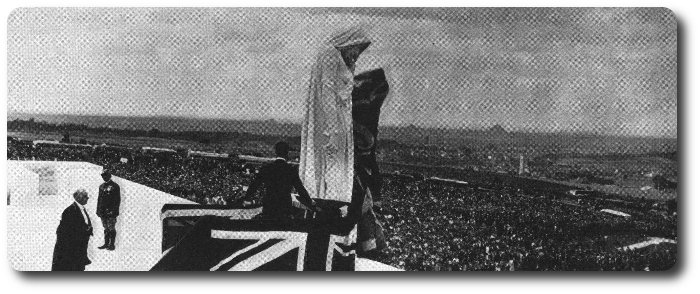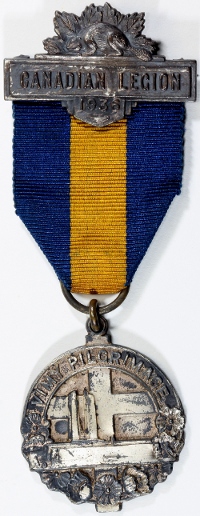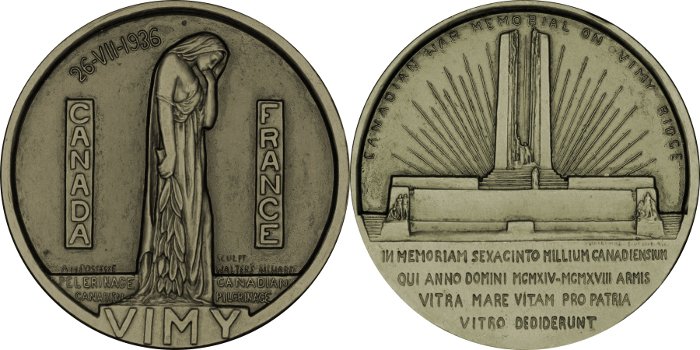Topic: Vimy Pilgrimage

We'll Never Forget
From the papers of Lieut. E.R. Gill, A Pilgrimage to Vimy; republished in "My Grandfather's War; Canadians Remember the First World War, 1914-1918," William D. Mathieson, 1981
 Well, now I come to the great day itself, Sunday, July 26, 1936. We, in Lens, were to leave in buses for the Ridge at 9 o'clock in the morning. It was actually nearly noon before we got away. The unveiling ceremony was to take place at 2:30 so that only a few hundreds of us had time to inspect the trenches that had been preserved and which are a bit unreal; to explore the wonders of the Grange Tunnel, and to see "No Man's Land" again, with its huge craters and the wire still there.
Well, now I come to the great day itself, Sunday, July 26, 1936. We, in Lens, were to leave in buses for the Ridge at 9 o'clock in the morning. It was actually nearly noon before we got away. The unveiling ceremony was to take place at 2:30 so that only a few hundreds of us had time to inspect the trenches that had been preserved and which are a bit unreal; to explore the wonders of the Grange Tunnel, and to see "No Man's Land" again, with its huge craters and the wire still there.
At 12:45 noon a green smoke bomb went up from the watch tower as a warning signal that all pilgrims were to commence the movement to the parade ground. Lined up in companics under our respective Party Leaders, the Khaki Bereted ex-service Canadians were given a splendid vantage, point in front of the memorial. The Blue Berets (relatives) were on either flank and the French Veterans in our rear
It is estimated that there were 6200 from Canada and another 2000 ex-Canadians from Britain in this Legion Expeditionary Force. Included in the latter was my twin brother whom I met right in front of the memorial after an absence from each other of more than sixteen years.
As one stood in awe before that towering Vimy Memorial, on the highest point of the Ridge known as Hill 145, and 200 feet above the plain of Douai, one began to appreciate how fitting was this magnificent monument as a witness to Canada's efforts, and sacrifices in the Great War. One hundred and forty feet high, one hundred and thirty feet wide, and one hundred and fifty feet deep from front to back, it stands on a concrete raft two feet thick, twenty feet below the level of the ground. Nearly 8000 tons of stone quarried in Yugoslavia have been used in the memorial, some of the largest blocks weighing 26 tons. On the walls are inscribed the names of 11,285 missing Canadians, that is, those known to be dead but having no known graves.
The appearance of our youthful looking King as he stepped on to the dais; his address, every word of which was listened to intently; the sudden appearance of the two squadrons of R.A.F. airplanes flying over our heads shortly before the flag-draped figure of Canada was unveiled by His Majesty followed by eighteen planes of the French Air Force, these things which those of us who were privileged to witness, we'll never forget. Every note seemed to have a new meaning. "O Canada", "Land of Hope and Glory", "La Marseillaise" and "God Save the King" all seemed to have an added and a deeper significance.
And then the inspiring climax of the Vimy Pilgrimage was over…


